Abstract 7/2014
Table of content
Krzysztof Grzelec, Olgierd Wyszomirski – Authority of regional transport as an organizer of passenger transport in the voivodeship
Michał Beim – Transport preferences of the regions of Kujawy and Pomorze inhabitants
Sławomir Goliszek, Mariusz Rogalski – Spatial-temporary changes of accessibility to public transport in Rzeszów in the light of infrastructure investment from the EU perspective 2014-2020
Szymon Bartuś – Modern passenger information systems in vehicles of public transport in selected Polish cities
Abstracts
Krzysztof Grzelec, Olgierd Wyszomirski
Authority of regional transport as an organizer of passenger transport in the voivodeship
Abstract: In accordance with the Polish Public Transport Act of 2010, the responsibility for organizing regional public transport is the task of local and regional governments. In some plans of sustainable development of regional public transport, which was to be prepared till the end of March 2014, authorities for organizing and managing of public transport in the regions were to be appointed . Only the rules of their establishment and functioning have not been precised. The most important element in the management of public transport is financing of passenger public transport, what is limited by formal and legal conditions and financial constraints. This article is devoted to issues of appointing authorities of regional transport, organization of services supply , contracting and financing of services and their integration within the regional public transport and regional and urban public transport. It presents the role of passenger transport organizer and its functions, conditions for the separation of passenger transport organization from its operation, acceptable legal and institutional forms of regional transport authorities and rules of supply management. Authors pointed out the provisions of the Act, that may create barriers for effective functioning of public transport in the regions and its integration as well. Various solutions included in regional public transport plans have also been discussed.
Key words: public transport plan, public transport organizer, voivodeship (region), regional public transport authority
Michał Beim
Transport preferences of the regions of Kujawy and Pomorze inhabitants
Abstract: The main problem of Polish railways is systematically decreasing number of passengers. Railways companies and public transport authorities to regain its position have to make a systematic effort to keep old passenger and attract new customers. Survey on passenger satisfaction of clients of the Arriva Rail Poland, conducted in 2013 were supplemented by research on transport behaviours and preferences of the inhabitants of the Kujawsko-Pomorskie Voivodship. The paper presents this part of researches which refers to the inhabitants preferences. Inhabitants’ opinions indicate that the most desirable mean of transport is car. When selecting mean of transport respondents mainly take under consideration comfort, then time of journey and price for this service. People are generally of negative opinion about transformations in the regional transport system, however, they recognize benefits of competition at the rail market. Arriva RP – a private company, the winner of the tender for the railway operator – is the highest rated public transport company in the region. The lowest rank belongs to the incumbent operator – Przewozy Regionalne Ltd. The highest appreciation of the element of the public transport infrastructure in the region refers to the bus stations in large cities, and the lowest – railway stations in small towns. The impact of newly constructed motorway A1 for changes of inhabitants’ transport preferences was focused in the survey. The new road investment – despite the relatively small spatial extent – contributed significantly to changes in travel behaviour.
Key words: regional transport, transport preferences, transport infrastructure investments
Sławomir Goliszek, Mariusz Rogalski
Spatial-temporary changes of accessibility to public transport in Rzeszów in the light of infrastructure investment from the EU perspective 2014-2020
Abstract: The article discusses the issue of improvement of urban public transport accessibility, assuming that infrastructure investments of the EU 2007-2013 and 2014-2020 programming periods will be its main stimulator. To present results of analysis of accessibility improvement two critical dates were appointed, 2013 as a reference year for accessibility, when investments of the UE 2007-2013 perspective have been completed and 2020, as anticipated state of public transport accessibility, after completion of the 2014-2020 programming period investments. Infrastructure investments, on which the analysis of changes in the accessibility of public transport in Rzeszów is based, have been presented in two expertises devoted to cities of Eastern Poland. The main objective of the study is to verify if funds of the EU financial perspective for 2014-2020, appropriated for improvement of the functioning of public transport in Rzeszów will be spent effectively. Analysis of improving the accessibility of public transport at an one-dimensional surface changes presents isochrones, arrival time, number of people and density of population located in the isochrones in 2013 and 2020.
Keywords: EU funds, accessibility, public transport, infrastructure investments
Szymon Bartuś
Modern passenger information systems in vehicles of public transport in selected Polish cities
Abstract: Dynamically developing cities as well as metropolitan areas are more frequently facing an intractable phenomenon of congestion and appearance of unpredictable occurrences, of both weather and social nature. These phenomena are uneasy to predict, thus working out solutions that would be effective and applicable in every situation becomes a challenge. Citizens of Polish cities move around more and more often, choosing various means of transport. In this situation the target of the authorities managing cities is to persuade the biggest number of people to use means of public transport instead of private cars. Both, people choosing a car as well as those using public transport aim to reach their destination in the shortest possible time, and this is also due to well developed information systems installed on the roads and public transport it becomes much more easier. The development of public transportation that has been proceeding for decades has brought changes to the vehicles themselves as well as way of thinking and understanding of the effective passenger information which has always followed the technical evolution of motorization. Once poor and simple passenger information based on stiff assumptions has evolved into a complex, adaptive, intelligent and overall system built on a wide range of multifunctional audiovisual appliances providing passengers with comprehensive information.
Key words: passenger information, indicator board, lighting panel, modern information systems, vehicles of public transport

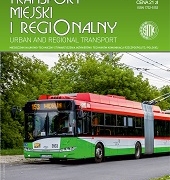 SITK RP
SITK RP 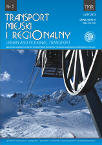 SITK RP
SITK RP 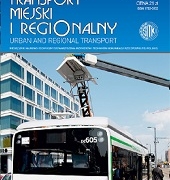 SITK RP
SITK RP 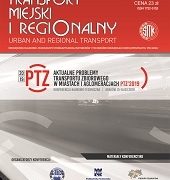
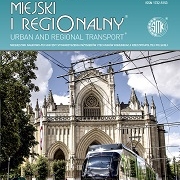 SITKRP
SITKRP 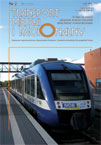 SITK RP
SITK RP 
 SITK RP
SITK RP SITK RP
SITK RP